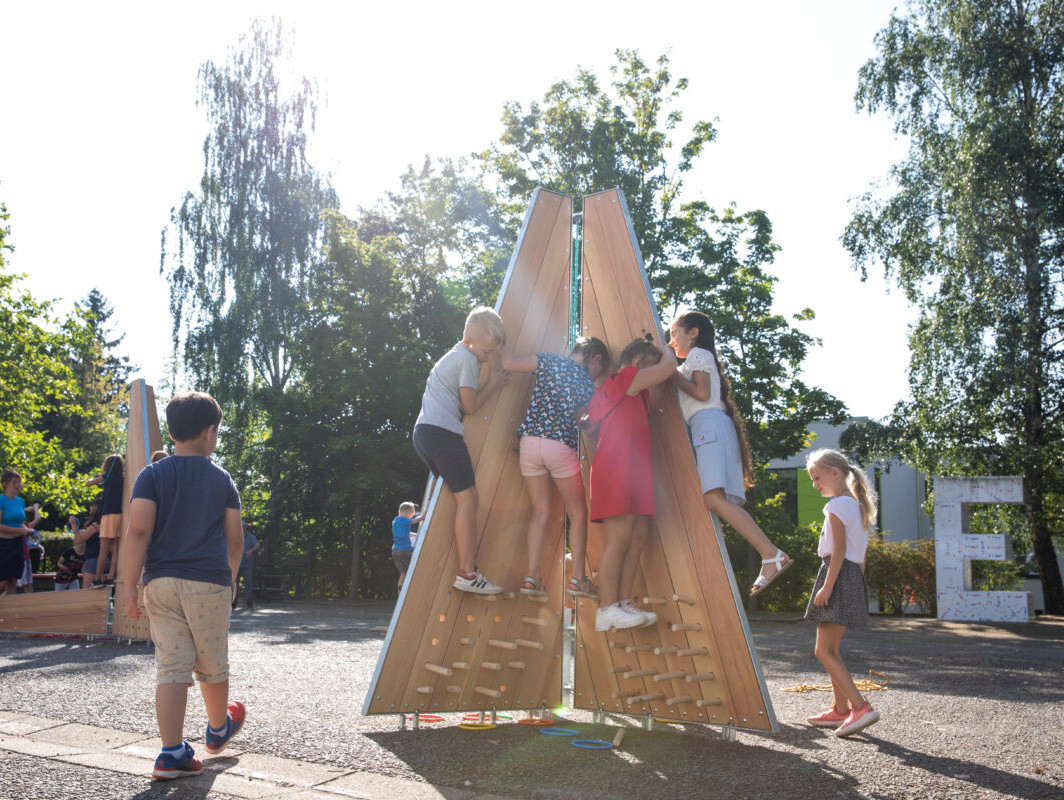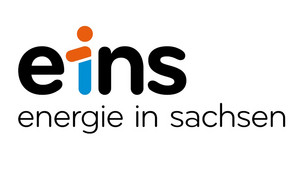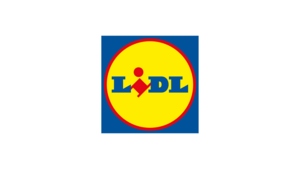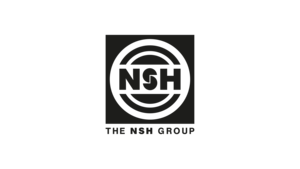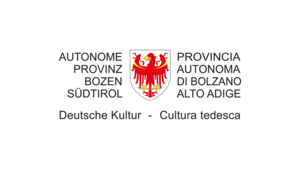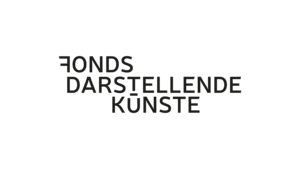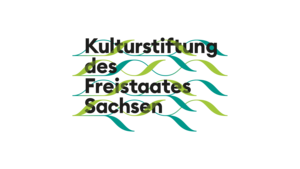On 8 and 9 September 2023, students from the Faculty of Applied Arts in Schneeberg handed over three objects developed in a semester project to their users in the Heckert area - the pupils of the Albert Einstein Primary School, the children and young people at the UK children's and youth centre, the compact youth centre and the residents of WG Einheit.
In collaboration with the architect and artist Amica Dall, Prof Jacob Strobel's wood design course has created objects for public spaces that are now to be creatively occupied and played with.
Amica Dall is one of the founders of the multidisciplinary British collective Assemble, which was awarded the prestigious Turner Prize in 2015.
In close collaboration with the future users, the students have designed objects for three locations in the Heckert area. This collaboration was initiated as part of the Capital of Culture project WE PARAPOM! - European Parade of Apple Trees by curator Barbara Holub. The inauguration of the works also marks the conclusion of this project in the Living Neighbourhood programme area, which will be launched in November 2024 with a new conceptual direction. The approach of the "All squares are playgrounds" project is to create places where people can meet and play together and to offer the opportunity to appropriate these places through creative use.
Play and structures in public spaces that people can collectively appropriate are at the centre of the artistic practice of the collective, which consists mainly of architects.
PLAYWALL by Johann Richter, Louise Binninger and Luise Renner for the Albert Einstein Primary School
PLAYWALL was designed by the students for the schoolyard in workshops and in discussions with the pupils. The pupils' wishes ranged between space to play and let off steam and the desire for a place of retreat. The students managed the balancing act of fulfilling the conflicting wishes in a relatively small schoolyard. PLAYWALL consists of trapezoidal panels that are arranged vertically and horizontally in various constellations. Two or three panels can be combined. The 30cm holes in the panel and the round rods create many possibilities for play.
Koubs by Magdalena Sander and Charlotte Quasdorf for the UK Children's and Youth Centre (40 Usti nad Labem Street)
In a workshop, the students provided the young people with banana boxes for spontaneous construction and play. Based on this, they developed an installation of two upscaled banana boxes made of Douglas fir, which will be permanently installed on the outside of the youth centre and designed together with the young people. Koubs is an object that enables and encourages romping, playing and relaxing. The two boxes provide a shield from the street and the UK, but at the same time encourage communication with each other. The design is largely inspired by banana boxes.
WIDO by Tolja Böhnisch, Anne Gerke and Jannik Zielke for the Compact youth centre and WG Einheit on the green space between Arno-Schreiter-Straße and Wolgograder Allee
In cooperation with the Compact youth centre, the students worked on the development of a three-dimensional structure made of wooden rods - WIDO. WG Einheit offered an area in the neighbourhood to create a play situation and publicly usable installation that is accessible to everyone. By engaging with the site, WIDO was created as a living, growing installation consisting of willows, each of which is connected by two parallel round rod elements. The linking of the plants forms a network of tunnels and domes that does not restrict the growth process of the willows, but merely guides it. The actual arrangement of the elements will be carried out with the residents and young people on site, who will then be able to add to the WIDO installation themselves by growing willow cuttings.
